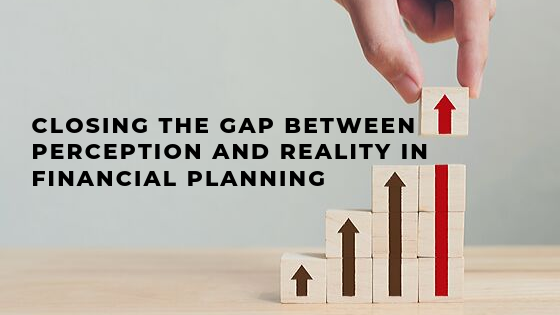Closing the gap between perception and reality in financial planning

The rumored multiples paid for the recent purchases of financial planning firms like MoneyGuidePro and Advizr — 25 times revenue — have been eye-popping. Envestnet reportedly spent over $500 million for MGP, while Orion paid $50 million for Advizr.
But despite these top-dollar deals, research shows a pronounced disparity between perception and reality when it comes to financial planning.
- A major asset manager commissioned a study that found two-thirds of advisers say they do plans with clients, but also found that only 15% of investors say they’ve had a plan done by their adviser.
- 50% of advisers call themselves “financial planners,” according to Cerulli, but “only 24% provide those services.”
Why? Simply put, financial planning as we know it is a complex, time-consuming process that too often falls short of expectations and winds up on the shelf.
Many say financial planning is the lynchpin of helping investors achieve their goals We agree a financial plan is important. But without a coordinated risk-smart, tax-smart implementation methodology across all accounts in a household that is designed and managed to improve outcomes, the plan is just that: a plan.
The challenge in making these plans effective comes down to issues in the initial implementation and the need for ongoing management designed to quantify and improve outcomes.
As the industry embraces the clear advantages of managing at the household level, next-generation tech solutions will eventually replace financial planning as we know it.
Its replacement, “Next Best Actions,” is a process of identifying and solving for a client’s financial needs in real time, increasing the perception of an adviser’s value while improving the reality of the investor’s financial outcomes.
The current state
In speaking with investors, advisers and industry leaders, the consistent view of the current state of financial planning is:
- Most advisers have a financial planning “conversation” to understand what the investor is looking to achieve over time.
- Investors, especially as retirement nears, want clarity; choices based on their circumstances and outlook; a roadmap; and assurance their goals can be achieved.
- Advisers say planning conversations underscore their value and helps establish a relationship of care and concern that engenders trust. And advisers find they can help the investor understand and articulate their hopes, fears, dreams and priorities.
- Most plans start with an inventory of holdings and a focus on “risk,” which typically results in a target asset allocation. This is where we shift from planning to implementation.
- There are three parts to the adviser/client engagement in the pursuit of achieving goals: 1) the financial plan; 2) implementation of the portfolio; and 3) ongoing monitoring and adjustment with risk and taxes in mind, as well as consideration of changes in investor circumstances and outlook.
- While there is an attempt at precision in executing the plan, too many variables will change over time; so a “roadmap” discussion begins with investors to break the plan into actionable items.
- Many advisers report they don’t go back to the plan. They find it hard to explain the implementation; the varied performance of different accounts and products; and how that relates to progress against plan. All this increases confusion and difficulty in explaining what’s been done (and why) while still demonstrating value.
The “next best action” approach
The game is changing from a best efforts roadmap discussion about individual investment products, accounts, and performance to coordinated household portfolio management where specific trades and actions organize the portfolio to meet risk parameters, tax-smart asset location, and quantify potential improved outcomes.
The key is demonstrating value and quantifying the benefit in dollars over time. This new approach brings clarity to the decision-making process between the client and adviser.
The quality of this new, comprehensive and ongoing conversation clearly demonstrates the adviser’s value by showing progress against objectives, which leads to increased retention, asset consolidation, and more and happier clients.
You could call this implementing financial planning as life unfolds. Software suggests next best actions to organize and adjust the household portfolio and quantify the benefit.
Ease of use and next best action thinking are key to making informed, impactful decisions over time. Advisers can meet clients where they are and adjust as circumstances or outlook change.
Register today for our Future of Financial Advice event on Nov. 20, or read the original post in InvestmentNews here.
Monthly insights from our Chief Growth Officer, Jack Sharry
Get exclusive insights and interviews from around the industry

 By
By 




